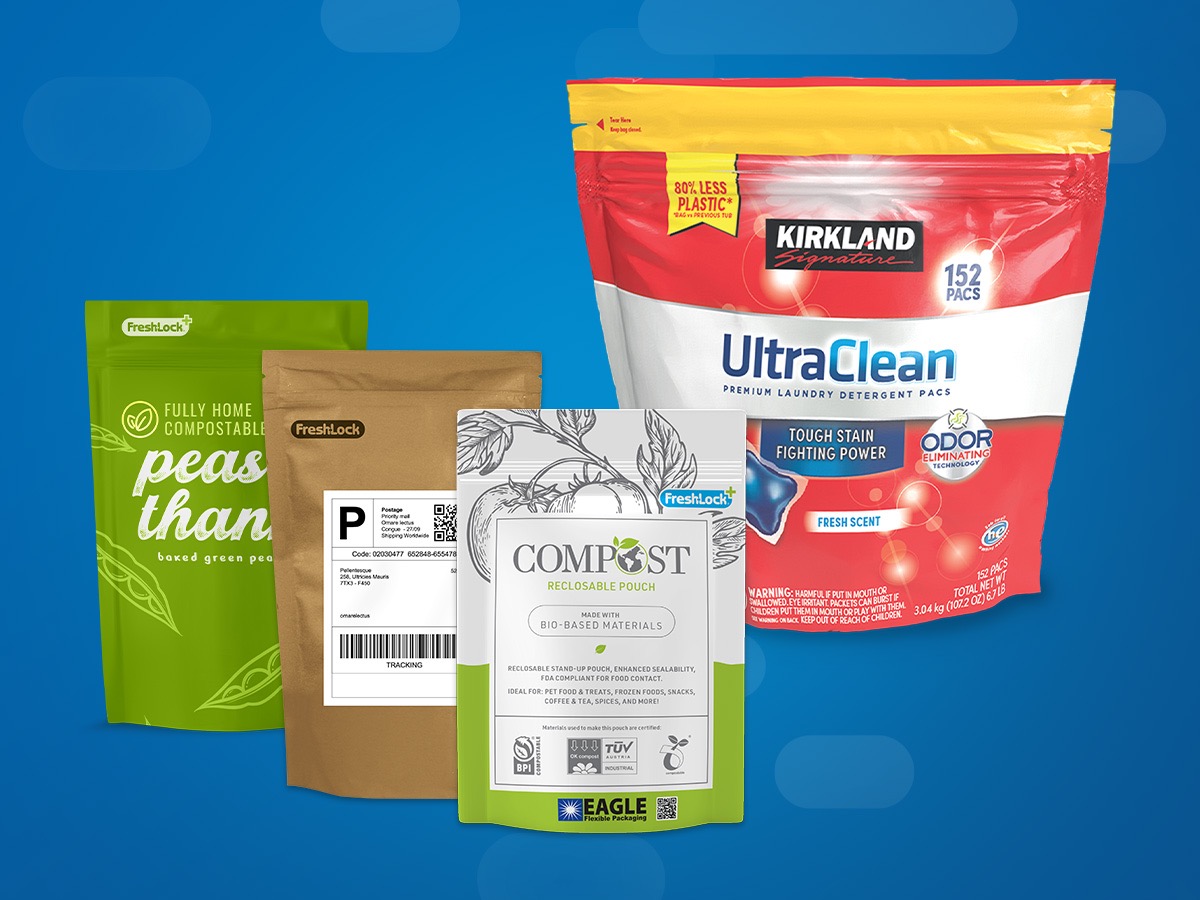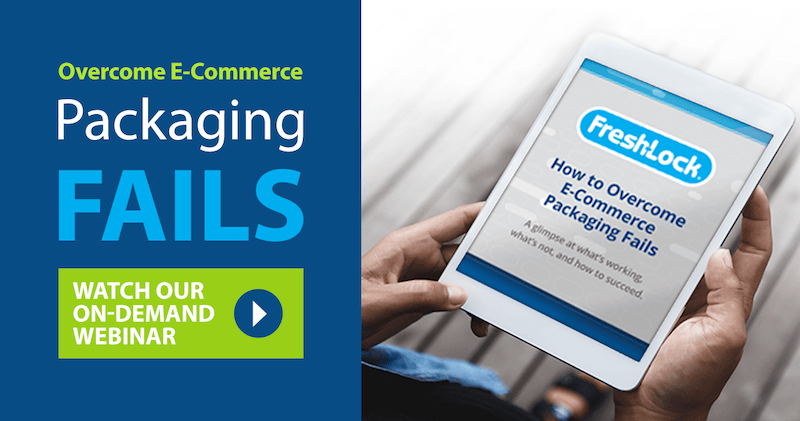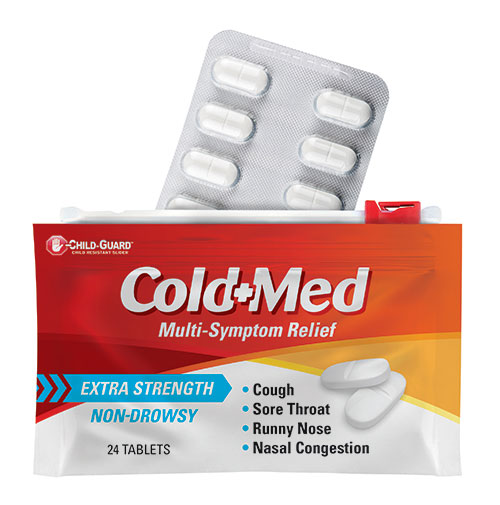
Pharmaceuticals and E-Commerce Growth | Flexible Packaging’s Role
As the growth of e-commerce continues, leaving traditional retail in flux, major players in the healthcare market are eyeing opportunities to up the ante with online shoppers.
While verticals such as grocery, fashion, and personal care products seem to get the most attention, the largest retailers and pharmacies in the nation are pursuing e-commerce strategies and preparing for a showdown.
According to a report from Digital Commerce 360, healthcare e-commerce is growing at an annual rate of 16 percent, outpacing the overall e-commerce growth rate of 15 percent.
Walgreens is investing $1 billion in digital healthcare over the next three years. That’s despite plans to cut costs in many other areas. CVS is expanding its executive team around digital efforts and plans to spend $350 million on related projects in 2019 alone.
In the meantime, retail giants Walmart and Amazon are making their own big investments in online healthcare. Amazon purchased online pharmacy PillPack in 2018 for $753 million. This year, Walmart is investing in blockchain technology for tracking pharmaceuticals while improving the mobile app experience for pharmacy customers.
Competition to become the leader in this space is high. A CNBC article explains the increasing tensions between Amazon, CVS, and Walgreens as the online retailer makes moves to lure customers over to its services.
Healthcare brands must consider how packaging strategy plays a role in becoming a preferred partner for online retailers. While shelf space isn’t the issue with e-commerce, the unboxing experience, prep-free packaging that reduces waste, and so-called “frustration-free packaging” are things many brands are trying to achieve because online retailers are demanding it and consumers are expecting it.
If you represent a healthcare brand or provide supply chain solutions for that market, now is the time to consider how you may need to adapt your packaging strategy for online retail and the challenges of the e-commerce supply chain. Whether it’s prescriptions, over-the-counter medications, or supplements and nutraceuticals, flexible options with reclosable features present a unique potential solution for e-commerce packaging.
Why E-Commerce and Healthcare Products Make Sense
As McKinsey reports, subscription services have been a key driver of e-commerce growth. There are some services that present consumers with a collection of curated items based on their known preferences. However, consumers also use online subscriptions for everyday needs.
Meal kits such as Blue Apron are one example. There’s also the success story of Dollar Shave Club along with Amazon’s Subscribe and Save program, which already features health and wellness products.
Medications, as well as nutritional supplements and many other healthcare products, fit this business model quite nicely. They are essential items that people tend to re-order on a regular basis. So, setting up scheduled refills on everything from ibuprofen and vitamin C to blood pressure medication and anti-depressants makes sense. It helps consumers avoid forgetting to get refills and make purchases that are important to their health.
Another consideration to make is America’s aging public. According to Visa, baby boomers make up half of U.S. consumer spending. As they age, they’ll need more healthcare products and pharmaceuticals, and the convenience of ordering online will be attractive to them.
Be careful about assuming baby boomers don’t shop online. While baby boomers may not flock to e-commerce as often as younger generations, a 2017 report from KPMG Global found boomers spend more money online than millennials. As KPMG Head of Consumer and Retail, Mark Larson explains:
“Baby Boomers are starting to understand and appreciate the technology that is out there. They’re also trying to appreciate and experience the convenience of buying online.”
Read more about baby boomers and packaging considerations.
Reclosable Flexible Packaging for Pharma and Healthcare
When picturing typical pharmaceutical packaging, most people probably imagine rigid plastic pill bottles or corrugated boxes containing blister packs. However, the makers of powdered nutraceutical products are increasingly taking advantage of flexible packaging, and many other types of healthcare brands are looking to do the same with other product types.
Flexible packaging options, such as the versatile standup pouch, offer specific benefits for e-commerce. As Fresh-Lock® market development manager Todd Meussling told Packaging Tech Today, consumers expect to receive healthcare products in good condition. You never know what items they’ll be thrown in a box with on the way from a fulfillment center to a consumer’s doorstep. Yet, consumers expect to receive these products in the same condition as they would on a store shelf.
“This leaves brands debating, ‘How can we ensure that soft gels and other vulnerable pharmaceuticals don’t break down during the shipping process?’” Meussling explains. “Flexible packaging can give and flex with shipping movements and, with thoughtful engineering, can be designed to protect products.”
Flexible packaging also provides a host of other design, cost, and sustainability benefits:
- Flexible films with barrier properties to protect product quality and maintain freshness
- Requires less storage space for warehousing and shipping
- Reduction of packaging source material compared to rigid formats
- Less energy required for manufacturing and transport
- Convenience of reclosability
Until recently, however, what kept most healthcare brands from using flexible packaging was the lack of a child-resistant solution, which for many products is an FDA requirement.
Fresh-Lock® closures changed that after introducing the Child-Guard® child-resistant track and slider. While originally developed to keep young children from accessing laundry packs, it is now being used in a variety of markets. Find out more in our Child-Guard® case study.
It’s important to note that part of meeting standards for child-resistance includes being easy enough for older adults to open while keeping children five and under away from the package contents. Child-resistant packaging solutions from Fresh-Lock® closures are designed and tested for use by baby boomer consumers.
The child-resistant Child-Guard® closure could be used on standup pouches as well as packaging designed to hold blister packs (see above), adding protection and helping brands achieve regulatory compliance.
When applied to a package using a film structure that also meets child-resistant criteria, the Child-Guard® closure enables healthcare brands to take advantage of the opportunity to utilize flexible packaging. The Fresh-Lock® team has also introduced a child-resistant zipper to its offerings.
Other solutions from Fresh-Lock® closures that can benefit health and pharma brands include our Tamper Evident Track for an additional layer of safety and the reduced-scale Fresh-Lock® mini Slider, which is ideal for small-format flexible packaging. For granulated products, such as protein powder and similar nutritional supplements, the Particle Plow Slider pushes product out of the track to ensure a proper seal.
As an added bonus, flexible packaging solutions from the Fresh-Lock® team are also highly sustainable. Our 8000 Series of closures includes full-recyclable options, and our Green Spool Program supports circular manufacturing efforts.
Brands who are the first to adapt to the challenges and changes that come with the shift to e-commerce will adopt a packaging strategy that gives them a competitive edge. For additional insights, access our free, on-demand e-commerce packaging webinar.
Whether it’s child-resistance, e-commerce, sustainability, or any other packaging challenge, contact the Fresh-Lock® team to find out more about how we can partner with your brand.


 Back to Blog
Back to Blog



